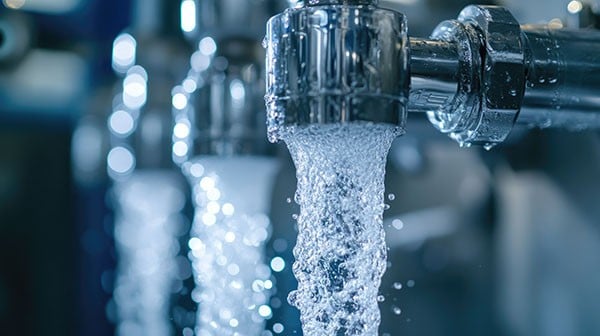Objectives:
- Understand how water quality impacts surgical instrument integrity, sterilization effectiveness, and regulatory compliance.
- Learn how tools like CensiTrac can support documentation and compliance with water quality standards.
- Identify the key team members and best practices for building a multidisciplinary water quality program.
The Overlooked Risk: Water Quality in Sterile Processing
Water is used at nearly every stage of surgical instrument reprocessing—flushing, cleaning, rinsing, and sterilization. But poor water quality can silently sabotage the entire process, leading to instrument damage, failed sterilization, and even regulatory citations.
Sterile Processing Departments (SPDs) face increasing demands to uphold safety and efficiency. Yet many are unaware of the full impact water quality can have on their daily operations and outcomes. From utility water to critical water and steam, each type plays a distinct role—and each requires strict monitoring to meet ANSI/AAMI ST108 standards.
Without proper treatment and testing, facilities run the risk of corrosion, pitting, or scaling of instruments. Worse, residual contaminants can compromise patient safety by impeding sterilization efficacy.
The Path to Compliance: Types of Water and Their Roles
To tackle water quality, SPDs must first understand the different classifications:
- Utility Water – used for flushing, washing, and rinsing; often the first contact point.
- Critical Water – extensively treated and used for final rinses; must be free of microorganisms and chemicals.
- Steam – produced from water and used in sterilizers; quality must meet specific purity thresholds.
Each type must be regularly tested for parameters like pH, conductivity, and endotoxin levels. Without consistent monitoring, facilities risk falling out of compliance with critical standards.
Tracking the Data with an Instrument Tracking System
A surgical instrument tracking system, like CensiTrac, can support departments in documenting water quality compliance.
By integrating water quality testing into your workflow, SPDs gain:
- Electronic Documentation – capture water testing alongside cleaning, inspection, and sterilization records.
- Efficiency Task Reporting – assign and track recurring water quality tasks with standard times, ensuring accountability and consistency.
- Audit Readiness – centralized records make it easy to provide proof of compliance during surveys or inspections.
This digital approach allows SPDs to tie water testing directly to daily operations, creating a full-picture view of process integrity.
Creating a Water Quality Team
Like any major quality initiative, water quality management requires collaboration. Facilities that succeed in this area often build dedicated teams with members from across departments.
Key roles include:
- Sterile Processing Leaders – oversee testing schedules and enforce protocols.
- Facilities Management – manage infrastructure issues like pipe corrosion or temperature fluctuations.
- Infection Control Specialists – provide guidance on how water quality impacts patient outcomes.
- Biomedical Engineers – monitor and service sterilizers, washers, and RO systems.
- Water Quality Experts – ensure proper treatment and advise on corrective actions.
Together, this team can interpret testing data, respond to red flags, and proactively protect patient safety.
A Culture of Accountability and Safety
Facilities that treat water quality as a core component of their sterile processing program often see improved outcomes across the board—from longer instrument life and lower replacement costs to more successful audits and better collaboration across departments.
By tracking water quality tasks in your instrument tracking system and fostering interdepartmental accountability, facilities can embed this critical safety measure into everyday workflows. It’s not just about passing inspections—it’s about delivering the safest care possible.
A Model for Other Facilities
The path to improved water quality in sterile processing doesn’t have to be overwhelming. Start with:
- Education – Ensure staff understand the importance of water quality and how to test it.
- Technology – Use systems like CensiTrac to track, schedule, and document water quality data.
- Teamwork – Form a multidisciplinary group to manage testing, interpret data, and take corrective action.
Water quality isn’t just a compliance issue—it’s a patient safety priority. And with the right tools and teams in place, your facility can set the standard.
Want to learn more? Hear from water quality expert Jeffrey Paquet in an upcoming ConCensis podcast episode focuse on best practices for managing water quality in your department.
Take the Quiz to Receive Your CE Credits!

